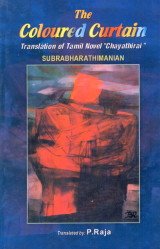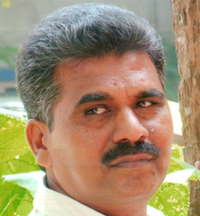|
பதிவுகள்
|

பதிவுகள் சஞ்சிகை உலகின் பல்வேறு நாடுகள் பலவற்றில்
வாழும் தமிழ் மக்களால் வாசிக்கப்பட்டு வருகிறது. உங்கள் வியாபாரத்தை
சர்வதேசமயமாக்க பதிவுகளில் விளம்பரம் செய்யுங்கள். நியாயமான விளம்பரக் கட்டணம்.
விபரங்களுக்கு ngiri2704@rogers.com
என்னும் மின்னஞ்சல் முகவரிக்கு எழுதுங்கள்.
பதிவுகளில் வெளியாகும் விளம்பரங்களுக்கு
விளம்பரதாரர்களே பொறுப்பு. பதிவுகள் எந்த வகையிலும் பொறுப்பு அல்ல. வெளியாகும்
ஆக்கங்களை அனைத்துக்கும் அவற்றை ஆக்கியவர்களே பொறுப்பு. பதிவுகளல்ல. அவற்றில்
தெரிவிக்கப்படும் கருத்துகள் பதிவுகளின்கருத்துகளாக இருக்க வேண்டுமென்பதில்லை.
|
|
கடன் தருவோம்! |
|

நீங்கள் கனடாவில் வசிப்பவரா? உங்களுக்கு 'மோர்ட்கேஜ்' வசதிகள் இலகுவாகச் செய்து தர வேண்டுமா? கவலையை விடுங்கள். யாமிருக்கப் பயமேன்! விபரங்களுக்கு
இங்கே அழுத்துங்கள்
|
|
மணமக்கள்! |
|
|
|
தமிழர் சரித்திரம்
|
|
 சுவாமி ஞானப்பிரகாசரின் யாழ்ப்பாண வைபவ விமரிசனம்(ஆங்கிலத்தில்)|முதலியார் இராசநாயகத்தின்)|மயில்லவாகனப் புலவரின் யாழ்ப்பாண வைபவமாலை|மட்டக்களப்பு இந்து ஆலயம்|ஸ்ரீனிவாச ஐயங்காரின் தமிழர் சரித்திரம்|தென்னிந்தியாவின் ஆலய நகரங்கள்| சுவாமி ஞானப்பிரகாசரின் யாழ்ப்பாண வைபவ விமரிசனம்(ஆங்கிலத்தில்)|முதலியார் இராசநாயகத்தின்)|மயில்லவாகனப் புலவரின் யாழ்ப்பாண வைபவமாலை|மட்டக்களப்பு இந்து ஆலயம்|ஸ்ரீனிவாச ஐயங்காரின் தமிழர் சரித்திரம்|தென்னிந்தியாவின் ஆலய நகரங்கள்| |

|

|
தமிழ்
எழுத்தாளர்களே!..
|
|
அன்பான
இணைய வாசகர்களே! 'பதிவுகள்' பற்றிய உங்கள் கருத்துகளை வரவேற்கின்றோம். தாராளமாக எழுதி
அனுப்புங்கள். 'பதிவுகளின் வெற்றி உங்கள் ஆதரவிலேயே தங்கியுள்ளது. உங்கள் கருத்துகள் ப் பகுதியில்
இணைய வாசகர்கள் நன்மை கருதி பிரசுரிக்கப்படும். பதிவுகளிற்கு ஆக்கங்கள் அனுப்ப விரும்புவர்கள்
யூனிகோட் தமிழ்
எழுத்தைப் பாவித்து மின்னஞ்சல் editor@pathivukal.com
மூலம் அனுப்பி வைக்கவும். தபால் மூலம் வரும் ஆக்கங்கள் ஏற்றுக் கொள்ளப் படமாட்டாதென்பதை வருத்தத்துடன்
தெரிவித்துக் கொள்கின்றோம். மேலும் பதிவுக'ளிற்கு ஆக்கங்கள் அனுப்புவோர் தங்களது சரியான மின்னஞ்சல்
முகவரியினைக் குறிப்பிட்டு அனுப்ப வேண்டும். முகவரி பிழையாகவிருக்கும் பட்சத்தில் ஆக்கங்கள் பிரசுரத்திற்கு
ஏற்றுக் கொள்ளப் படமாட்டாதென்பதை அறியத் தருகின்றோம். 'பதிவுக'ளின் நோக்கங்களிலொன்று இணையத்தமிழை
வளர்ப்பது. தமிழ் எழுத்துகளைப் பாவித்துப் படைப்புகளை பதிவு செய்து மின்னஞ்சல் மூலம் அனுப்புவது அதற்கு
முதற்படிதான். அதே சமயம் அவ்வாறு அனுப்புவதன் மூலம் கணிணியின் பயனை, இணையத்தின் பயனை அனுப்புவர்
மட்டுமல்ல ஆசிரியரும் அடைந்து கொள்ள முடிகின்றது. 'பதிவுக'ளின் நிகழ்வுகள் பகுதியில் தங்களது
அமைப்புகள் அல்லது சங்கங்களின் விழாக்கள் போன்ற விபரங்களைப் பதிவு செய்து கொள்ள விரும்புகின்றவர்கள்
மின்னஞ்சல் மூலம் அல்லது மேற்குறிப்பிடப்பட்ட முகவரிக்குக் கடிதங்கள் எழுதுவதன் மூலம் பதிவு செய்து கொள்ளலாம். |
|
Download Tamil Font
|

|
|
|
BOOK REVIEW |
Transcreating a tamil novel
Chayathirai: TRANSLATED AS THE COLOURED CURTAIN by P.Raja
BY D.GNANASEKARAN
  Translation
plays an important role in appreciating different modes of thought and different
life styles while providing a fresh view of oneness, unity and commonality.
Nanoam chomsky's remark that "Translation is like squaring a circle and circling
a square" smacks of a bit jovality. But we are unable to take it with a grain of
salt if we understand the statement in its proper perspective. there is no
gainsaying the statament that translation has always been an adjunct of creating
writing itself. Translation is a compromise, the effort to be literal and the
effort to be idiomatic. what is generally understood as a translation involves
the rendering of a Source Language Text(SL) into the Target Language Text (TL)
so as to ensure that the surface meaning of the two will be approzimately
similar and the structures will be seriously distorted. Translation measures the
linguistic competence of the translator by means of the TL product. Translation
plays an important role in appreciating different modes of thought and different
life styles while providing a fresh view of oneness, unity and commonality.
Nanoam chomsky's remark that "Translation is like squaring a circle and circling
a square" smacks of a bit jovality. But we are unable to take it with a grain of
salt if we understand the statement in its proper perspective. there is no
gainsaying the statament that translation has always been an adjunct of creating
writing itself. Translation is a compromise, the effort to be literal and the
effort to be idiomatic. what is generally understood as a translation involves
the rendering of a Source Language Text(SL) into the Target Language Text (TL)
so as to ensure that the surface meaning of the two will be approzimately
similar and the structures will be seriously distorted. Translation measures the
linguistic competence of the translator by means of the TL product.
The work under study The Coloured curtain renders itself as a touchstone to
assess P.Raja as a translator. It was originally written in tamil by
Subrabharathimanian under the title Chayathirai (published by B.Rr.. publishing
corporation, Delhi and priced at Rs.200). The novelist has published 200 short
stories, fifiteen short story collections and one travelogue. His stories have
been translated into Indian regional languages and into the European languages
like English and Hungarian. He has been the editor of the Tamil quaterly,
Kanavu, since 1987. The translator is a freelancer, well-anthologised poet,
novelist, shortstory writer and the critic. He has already translated several
books from Tamil into English and proved himself component enough in the art of
translation.
The main idea of translating a work from Tamil into English is reaching out to
the global audience. We know that translation is neither a creative art nor an
imitative art but stands somewhere between the two. From all our considerations
of this art, the fact emerges that the individual translator can translate one
work only in one way, and that his best way is always a tension between the
original and the new idiom of the translator. P.Raja appears to have
experienced, nor can never be eliminated, nor can the tension between closeness
and naturalness, between form and meaning, between poetry and prose. These
things represent divergent ideals, but in translation they have to bo reconciled
for translation is a matter of compromise. The translator has to be faithful to
the original in rendering its intensity, poignancy and imagery, usually
circumscribed by a certain cultural ethos. It is maintained that faithfulness
should be adhered to in the process of transtlating, but " faithfulness" in the
field of translation does not always mean "the same thing" .of the qualities
needed by a translator many authorities feel that a translator must be a master
of two languages. The knowledge of the foreign language must be critical and of
his own must be practical. The translator like the critic and scholar must be a
reader. The ideal transtor must be the ideal reader, a rare breed, P.Raja can
claim to belong to this rare breed. The fact that he has already made a mark in
Tamil creative writing proves that he is at home with both the languages, Tamil
and English. This bilingual proficiency has sharpened his technical skills, of
course. governed by his fertile imagination. He could with ease grasp the
adroitness of comparative arrangement of linguistic elements between the SL and
the TL text with regard to phenemic, morphemic, lexical, syntactic, semantic and
discourse levels. Since he himself shares tha cultural ethos depicted in the
original by being a Tamilian, he handles the idiomatic problems without
distorting the spirit of Tamil idioms and usages.
Coming to the context of the Tamil novel Chayathirai , one can confidently say
that it is one of the significent novels in Tirupur pleasently covered with a
coloured curtain. The novel is a curtain raiser on the plight of the suffering
dyeing community attached to the textile industry in Tirupur. it presents a
series of contrasts between illusion and reality, life and death, the beautiful
and the external internal and so on. The novelist successfully brings the
various human attributes under close scrutiny and the narration is realistic and
poignant. The charaters are not larger than life. They share the virtues and the
vices that a commoner normally undergoes. in addition, the novel broadens its
scope to study the socio-economic travais of the weavers who are torn between
life and death. in fact, the socio-economic dimension appears to be more
significant than the moralistic outlook. One can't help think of the
existentialist philosophy while digesting the narrative technique employed by
the novelist from the beginning to end.Faithfulness should be the basic
principle for a translator. P.Raja has tried to do justice to the task in hand
and his sucess lies in his reasonable adherence to the fidelity of the original.
Translation of the same book by different translators is bound to face a few
variations as is seen in the cse of translations of great works. What strikes
the reader in the case of translations of great works. What strikes the reader
in P.Raja's translation is his utmost sicerity and felicity of expression.
As Prema Nandakumar aptly puts iin her review in the INDIA TODAY , the novel "is
quite a significent novel in Modern Tamil literature on the grounds that it is
told artistically and that the treatment of its subject matter is quite new."
The novel can be classified under the post-modernist fiction. Anecdotal in
nature, the events don't appear to be interrelated. But "as the curves and the
lines join together to make a picture, the expriences of several characters put
together make the reader read the mind of the writer. Since Subrabharathimanian
has deftly handled such a technique, the novel touches us personally too and
awakens our responsibilities" (quoted from the review included in the
translation). Such a technique throws a challenge to the translator who has to
be extra-careful not to disrupt the flow of narration and thereby distort the
spirit and meaning of the novel. It is likened to right-rope walking and P.Raja,
having accepted the challenge, comes to terms with his job not only in ensuring
the beauty and the intensity of the original narration but also in enhancing tha
readablilty of tha translation. His job is commendable and it is possible only
for a translator who gained a reasonable mastery over both the languages, Tamil
and English.
Tirupur brings to our minds a land of the river Noeyal and greens and vegetables
grown on its banks. In addition, the variety of woven fabrics that lure people
and the newly sprung multi-coloured constructions too come to mind. All these
adorn the external Brushing aside attractive curtains, we are shocked to see an
altogether different world behind the farcade. The Noeyal is reduced to a
gorgeously coloured gutter. The streets are polluted with the waste effluents
from the dye industries.
Ponneelan, Sahitya Akademi winnwe, in his foreword to the translation say that
this novel can't oast of any story. There is not even a basic thread running
through the novel. Nor does it show its characters in different moods. And all
that one can see is the dead leaves dancing on this waste-land, dancing to the
tunes of the winds. Bhaktavatchalam is the lead character who threads through
the entire action. He lives with Jothimani clandestinely without the matrimonial
tie-up. Characters like Nagan, Sundari, Veluchami and Kumar bear the brunt of
the chemical pollution and live mechanically throwing their hands up in despair.
in short, the novel is a splendid polemic against our greed for wealth by
polluting our natural resources and environment. It talks about marginal men.
This novel has no plot, story or even hero in the traditional sense. What stands
out is the novelist's way of narration. He makes the reader feel with all his
senses and this technique of clarity is laudable. the same clarity shines
through Raja's translation too. The narrative tempo has been maintained
throughout and P.Raja has done his best to bring the same pervading gloom and
despair into the translation and we sigh heavily as the novelist himself does
when he describes the plight of the poor Tirupur children working in dye
industries.
The translator has already used Tamil words in transliteration like kumkum,
grahapravesam, poojari, ragi, kali, munud, nalangu,thali, sombu, therukutthu,
sticker pottu,aadi month, erukkam leaves, alagu, appa, and hybrids like kolams.
They add a native colour to the narratio,n. they are distinguished by
italicising them. His felicity of expression is evident from the phrases like
"the noisy street budded into view", "That made many women shoulder their way
towards it" (p.8), "He thought of those halycon days..." (p.162), "The ashoka
tree at the portico continued to disown its brown leaves" (p.163), and "There
was a million crowd of pilgrims" (p.146). There are some typographical errors
like "those mixture of colours" (p.83,1.2), "... it was the man from Mysore who
forced him sit in the loom pit(p.65). it would be helpful if the tamil words in
transliteration were glossed at the end of the book. This lapse might hamper a
European reader who does not know Tamil.Sentences like the following could have
been translated still more idiomatically : " The fritted and broken wires of
Nagan's chair that sat at tha gate come to this view"(p.14), "he could see his
footwear covered with street dust and progressed further to reach the edge of
his pants"(p.10), "...the passangers as if disturbed by that sound vied with
each other to elbow their way out"(p.11), " he moved to the street corner only
to find that a lorry was parked obstructing the company's building from the
view"(p.13). Of course, any translator, for that matter, has an inherent scope
for further refinement. As Otto Jesperson has nively put it, "Translation is
transferring a person from one cosmos to another". The translator has not only
to translate a work of art but to transliterate and transcreate it if warranted
to make the translation readable. P.Raja has employed all these tools polished
over the years and kept ready in his arsenal to make the translation as readable
and absorbing as the original.
Dr.D.Gnanasekaran, Reader in English, K.M.Centre for P.G. Studies, pondicherry.
Add:29, Main Avenue, West Brindawan, pondicherry-605013, (India).
Delhi: B.R.PUBLISHING
CORPORATIONS: Rs 200
Sent by: issunderkannan7@gami.com
srimukhi@bsnl.in |
|
©
காப்புரிமை 2000-2008 Pathivukal.COM
முகப்பு||Disclaimer|வ.ந,கிரிதரன்
|

|
| |
|

